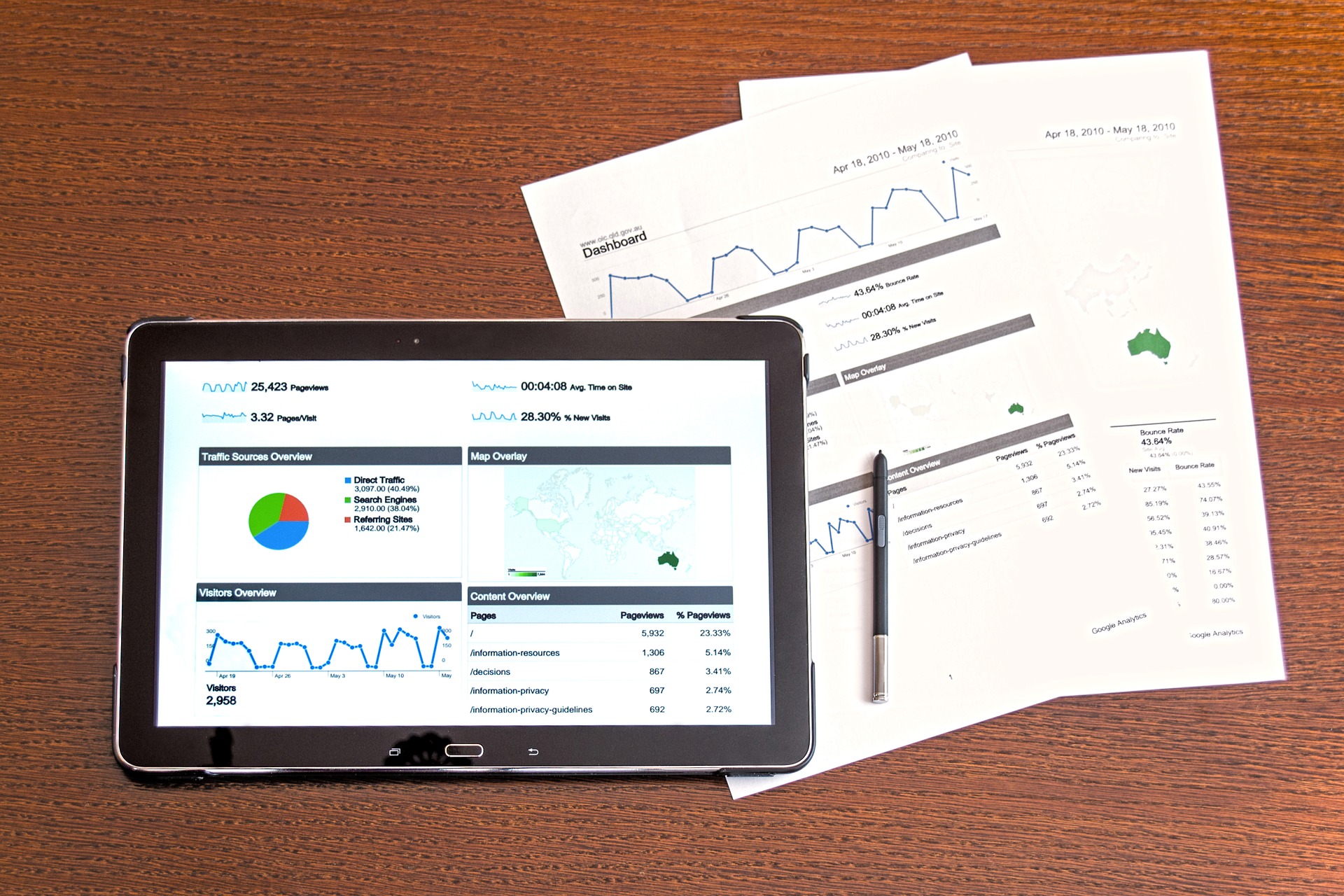Depending on the structure of your website, you might have dozens or even thousands of different pages that a potential lead could find. Even if you do have thousands of pages, you will likely find that a few of your pages generate the most traffic. Most local business websites get the most traffic on their homepages, their about pages, and their contact us pages. Some of your very popular blog posts may also be huge drivers for traffic to your site. Are you maximizing this traffic? Are you using your most popular pages to generate as many leads as possible?

Determining Which Pages Get the Most Traffic
While it is most common for the homepage, about us page, and contact page to get the most traffic, this might not actually be the case for your website. There are plenty of ways you can determine which of your pages actually get the most traffic, including consulting your Google Analytics or most other website performance tools. On Google Analytics, look at the report labeled “Top Content.” It’ll show you your most visited pages, the view count, your bounce rate, and the average visit time. Choose your three or four highest performing pages and start optimizing them for lead generation.
Generating Leads from Your Most Popular Pages
How do you actually get more people to become leads while they view one of your most popular pages? Here are a few tips that should make it easy to turn your most-viewed pages into your most successful pages:
1. Decrease your page bounce rate.

You want more visitors to spend more of their time on the page that they find and visit. If you want people to stick around, you have to make sure that your page grabs their attention and holds it long enough for your page to explain why they should be interested in you. You only have a few seconds to do this, so consider these important aspects of your page: how long your page takes to load and your page design. Does your website load quickly? Is it designed both beautifully and intuitively?
Google’s definition of bounce rate is the percentage of single pageview visits to a website. But they actually have it wrong.
As a rule of thumb, a bounce rate in the range of 26 to 40 percent is excellent. 41 to 55 percent is roughly average. 56 to 70 percent is higher than average, but may not be cause for alarm depending on the website. Anything over 70 percent is disappointing for everything outside of blogs, news, events, etc.
2. Make sure you have the right tools for the job.
You can have the best-looking website that has ever been created, but if you don’t have the right tools for capturing leads, you might as well not even have a site. You’ll need a call to action and a form or button that drives your visitors to take the action you want them to take.
There are lots of free plugins for platforms like WordPress, or you can ask a developer to create something more customized, specifically for you and your pages. Choose a solution that makes it easy not just to capture the lead, but also to track that lead and make sure it’s being properly followed-up.

3. Make your call to action stand out.
You want your call to action to be prominently placed, in a way that draws the visitor’s eye to it. This means proper use of whitespace and the right positioning. We in the west naturally read content from left to right, top to bottom, which means the top left of your page is the most viewed and most important place, but you can put your call to action anywhere on your page, as long as it draws the eye to it and encourages the user to follow through with that action.
There’s no better (in my opinion) user of whitespace on their website elements than Apple. For years, the Apple website has maximized the use of whitespace, using it showcase the sleek new product they’ve undoubtedly just come out with. It’s a smart tool of the trade, and certainly helps with their online sales.
Conclusion
At the end of the day, your most popular pages may be different than the next guys. Only the data can tell you what is most popular on your website, and you should trust that over your gut instinct. Find this data first, then begin to optimize them for lead generation using the tips above.
Remember, Frank Underwood will tell you that the best way to devour a whale is one bite at a time. So, take your time on each of these pages, and make the most of your lead generation opportunities.
Depending on the structure of your website, you might have dozens or even thousands of different pages that a potential lead could find. Even if you do have thousands of pages, you will likely find that a few of your pages generate the most traffic. Most local business websites get the most traffic on their homepages, their about pages, and their contact us pages. Some of your very popular blog posts may also be huge drivers for traffic to your site. Are you maximizing this traffic? Are you using your most popular pages to generate as many leads as possible?

Determining Which Pages Get the Most Traffic
While it is most common for the homepage, about us page, and contact page to get the most traffic, this might not actually be the case for your website. There are plenty of ways you can determine which of your pages actually get the most traffic, including consulting your Google Analytics or most other website performance tools. On Google Analytics, look at the report labeled “Top Content.” It’ll show you your most visited pages, the view count, your bounce rate, and the average visit time. Choose your three or four highest performing pages and start optimizing them for lead generation.
Generating Leads from Your Most Popular Pages
How do you actually get more people to become leads while they view one of your most popular pages? Here are a few tips that should make it easy to turn your most-viewed pages into your most successful pages:
1. Decrease your page bounce rate.

You want more visitors to spend more of their time on the page that they find and visit. If you want people to stick around, you have to make sure that your page grabs their attention and holds it long enough for your page to explain why they should be interested in you. You only have a few seconds to do this, so consider these important aspects of your page: how long your page takes to load and your page design. Does your website load quickly? Is it designed both beautifully and intuitively?
Google’s definition of bounce rate is the percentage of single pageview visits to a website. But they actually have it wrong.
As a rule of thumb, a bounce rate in the range of 26 to 40 percent is excellent. 41 to 55 percent is roughly average. 56 to 70 percent is higher than average, but may not be cause for alarm depending on the website. Anything over 70 percent is disappointing for everything outside of blogs, news, events, etc.
2. Make sure you have the right tools for the job.
You can have the best-looking website that has ever been created, but if you don’t have the right tools for capturing leads, you might as well not even have a site. You’ll need a call to action and a form or button that drives your visitors to take the action you want them to take.
There are lots of free plugins for platforms like WordPress, or you can ask a developer to create something more customized, specifically for you and your pages. Choose a solution that makes it easy not just to capture the lead, but also to track that lead and make sure it’s being properly followed-up.

3. Make your call to action stand out.
You want your call to action to be prominently placed, in a way that draws the visitor’s eye to it. This means proper use of whitespace and the right positioning. We in the west naturally read content from left to right, top to bottom, which means the top left of your page is the most viewed and most important place, but you can put your call to action anywhere on your page, as long as it draws the eye to it and encourages the user to follow through with that action.
There’s no better (in my opinion) user of whitespace on their website elements than Apple. For years, the Apple website has maximized the use of whitespace, using it showcase the sleek new product they’ve undoubtedly just come out with. It’s a smart tool of the trade, and certainly helps with their online sales.
Conclusion
At the end of the day, your most popular pages may be different than the next guys. Only the data can tell you what is most popular on your website, and you should trust that over your gut instinct. Find this data first, then begin to optimize them for lead generation using the tips above.
Remember, Frank Underwood will tell you that the best way to devour a whale is one bite at a time. So, take your time on each of these pages, and make the most of your lead generation opportunities.
Published on March 16, 2017

